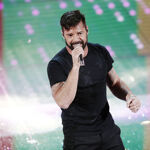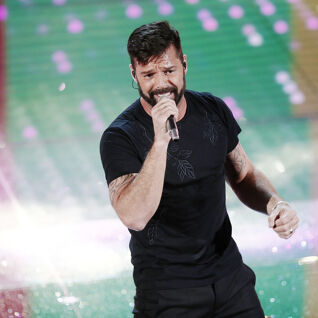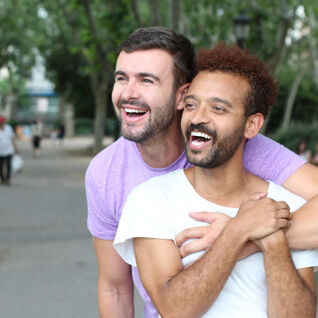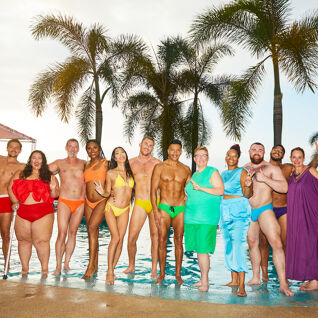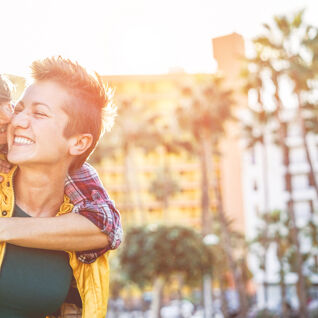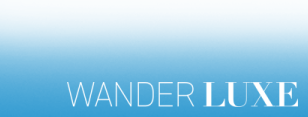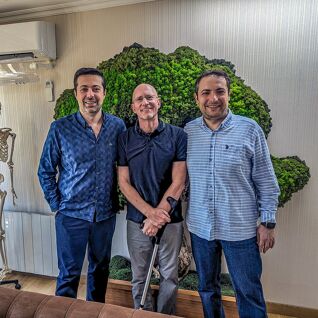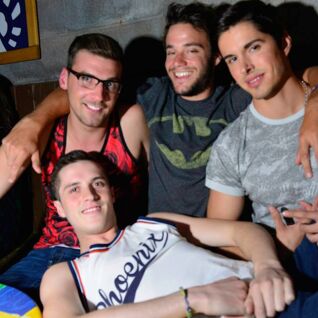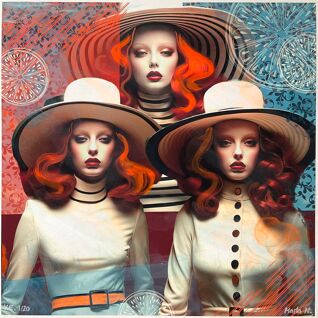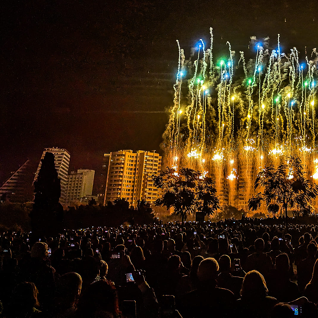History! Like radon, it’s all around us, even though you can’t see it. But unlike radon, absorbing it makes you a better person with a more informed future. Fortunately, in L.A. at least, it can also be fun.
The city is particularly effervescent with LGBT history, with countless little fragments of the past hidden here and there. We’ve gathered together a listing of some of our favorite hotspots where you can see what made us the amazing community of equality and diversity we are today. Learn, enlighten your friends, and pay homage to those whose sacrifices made us who we are today.
You can walk to most of these destinations, or bike, or take the bus. Or you could even drive, if you’re that kind of person.
1. Garden of Allah
 Originally built as a palatial residence, the Garden of Allah was built just before World War I. It went through several owners, including lesbian actress Alla Nazimova, before landing in the hands of Dorothy Parker.
Originally built as a palatial residence, the Garden of Allah was built just before World War I. It went through several owners, including lesbian actress Alla Nazimova, before landing in the hands of Dorothy Parker.
Ms. Parker is one possible origin of the term “Friend of Dorothy.” Most folks assume that it’s a Wizard of Oz reference, but another theory suggests that it actually references the very gay circle of men who attended Dorothy’s Parker’s frenetic Hollywood parties.
Alas, the beautiful Garden of Allah, with its elaborate wooden flourishes and gardens, is long gone. But you can visit the McDonald’s that now stands in its place.
2. UCLA AIDS Institute
 The University of Southern California is at the vanguard of medical research into AIDS and HIV. It was the first to unravel why early HIV meds weren’t working; the first to understand how HIV effects the brain; and the first to develop animal models for HIV that allowed for groundbreaking new research.
The University of Southern California is at the vanguard of medical research into AIDS and HIV. It was the first to unravel why early HIV meds weren’t working; the first to understand how HIV effects the brain; and the first to develop animal models for HIV that allowed for groundbreaking new research.
And the discoveries keep coming: in recent years, they generated T cells from embryonic stem cells; developed rectal microbicides that reduce transmission in primates; and discovered a link between childhood sexual abuse and HIV transmission.
3. The Black Cat Tavern
 A few years before Stonewall, The Black Cat was the site of a major police raid on a gay bar.
A few years before Stonewall, The Black Cat was the site of a major police raid on a gay bar.
It was New Year’s Eve, and undercover cops tried to arrest patrons who kissed at midnight. In response, bar-goers rioted — a tactic that’s proved popular over the years in Los Angeles — and eventually police reinforcements arrived to beat people into submission.
In the days that followed, local organizers held a protest rally. The event served to unite the community and drove further activism — including the founding of a magazine that would become The Advocate.
There’s still a cool bar called The Black Cat on the site, but it’s simply gay-friendly instead of gay-focused.
4. Harry Hay’s House, 2328 Cove Avenue
 This is where the modern gay liberation movement began: a cute little home near the Silverlake Reservoir. Hay founded a group called “Bachelors Anonymous” that eventually became the Mattachine Society.
This is where the modern gay liberation movement began: a cute little home near the Silverlake Reservoir. Hay founded a group called “Bachelors Anonymous” that eventually became the Mattachine Society.
Hay was an actor, a communist, and a fairy who pushed aggressively for gay rights while resisting assimilation before it was fashionable.
The Cove Avenue Stairway nearby was renamed a few years ago in his honor. Check it out. It’s beautiful and exudes pride in action at a time when it wasn’t just a big party.
5. Pershing Square, 532 South Olive Street
 This unassuming flat public space was ground zero for downtown cruising in the first half of the 20th century. A variety of establishments around the park were friendly toward hookups: The Biltmore Hotel, Westlake Park (now known as MacArthur Park), Maxwell’s at 3rd and Hill, the Crown Jewel, and a variety of long-gone bars.
This unassuming flat public space was ground zero for downtown cruising in the first half of the 20th century. A variety of establishments around the park were friendly toward hookups: The Biltmore Hotel, Westlake Park (now known as MacArthur Park), Maxwell’s at 3rd and Hill, the Crown Jewel, and a variety of long-gone bars.
These days, Pershing Square is a good place to feed a few pigeons, enjoy the sun, and just hang out. The cruisers have all gone online. Well, mostly…
6. Will Rogers State Beach, 15100 Pacific Coast Highway
 This is the gay beach of LA. Why is it the gay beach? It just is. The bathing- suited boys are everywhere, for one thing.
This is the gay beach of LA. Why is it the gay beach? It just is. The bathing- suited boys are everywhere, for one thing.
Alternately known as Ginger Rogers Beach or Will Rogers State Screech, its been home to sandy shows and movies like Baywatch and Creature from the Black Lagoon. Take the Santa Monica Blue Bus #9 and wear as little as possible.
7. ONE Archives, 626 N Robertson Blvd
 Home to the world’s most extensive LGBT history archive, ONE collects and protects our vast queer past from LA and around the globe.
Home to the world’s most extensive LGBT history archive, ONE collects and protects our vast queer past from LA and around the globe.
The gallery on Robertson hosts ever-changing exhibits of art and artifacts. And over at 909 West Adams Blvd, the main archives are a great place for research and quiet reflection.
8. El Pueblo Historical Monument
 The first inhabitants of the LA region, the Tongva, were startlingly queer-friendly. They observed same-sex marriages, and believed that a person’s sexual orientation was determined prior to birth. Gays and lesbians were celebrated as two-spirited.
The first inhabitants of the LA region, the Tongva, were startlingly queer-friendly. They observed same-sex marriages, and believed that a person’s sexual orientation was determined prior to birth. Gays and lesbians were celebrated as two-spirited.
Then the Europeans showed up, and it’s basically been downhill ever since until we decided to take back over. But you can still pay your respects. Although the monument is mostly a tribute to colonists, seek out a plaque on the ground that celebrates LA’s original inhabitants and original name: Yang Na.
9. Klyt Bathhouse, 132 East 4th Street
 The words “LA’s oldest bathhouse” may not sound super-enticing, but queer historians won’t be able to resist the pull of Klyt. Back in the day, it was a sort of flophouse for homeless guys who could afford a few bucks for a room, and for celebrities who wanted to see but didn’t want to be seen.
The words “LA’s oldest bathhouse” may not sound super-enticing, but queer historians won’t be able to resist the pull of Klyt. Back in the day, it was a sort of flophouse for homeless guys who could afford a few bucks for a room, and for celebrities who wanted to see but didn’t want to be seen.
The baths see fewer closeted celebrities than they did in their heyday, but there’s still plenty of great people-watching to be had.
10. Biltmore Hotel, 506 South Grand Street
 The Biltmore’s always been a great place for cruising, even in the days before Scruff. But there’s more significance to the place: in 1971, it saw a crucial turning point in the fight to get the International Psychologists & Psychiatrists to remove homosexuality as an illness from the DSM.
The Biltmore’s always been a great place for cruising, even in the days before Scruff. But there’s more significance to the place: in 1971, it saw a crucial turning point in the fight to get the International Psychologists & Psychiatrists to remove homosexuality as an illness from the DSM.
At the 1971 meeting, the idea was floated of officially endorsing electroshock therapy to “cure” homosexuality. The Gay Liberation Front crashed the meeting and started a dialogue that two years later ended the psychological stigma of homosexuality and began an astonishing revolution in American thinking about identity.

